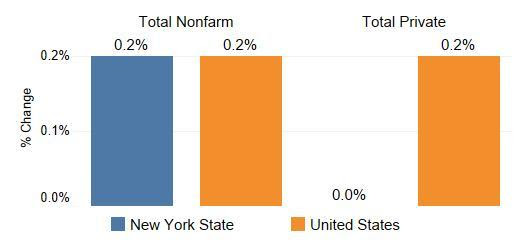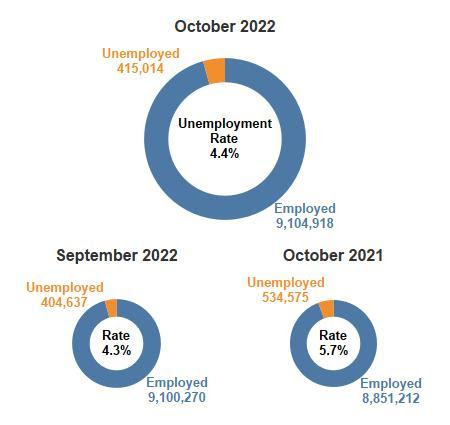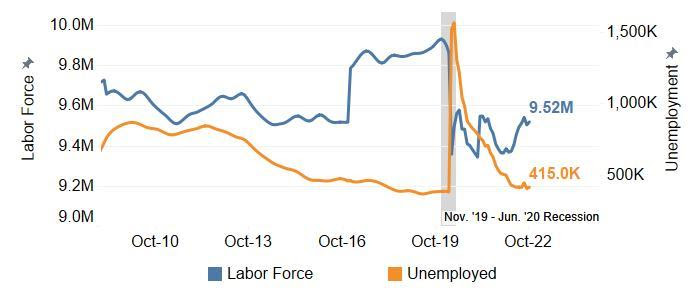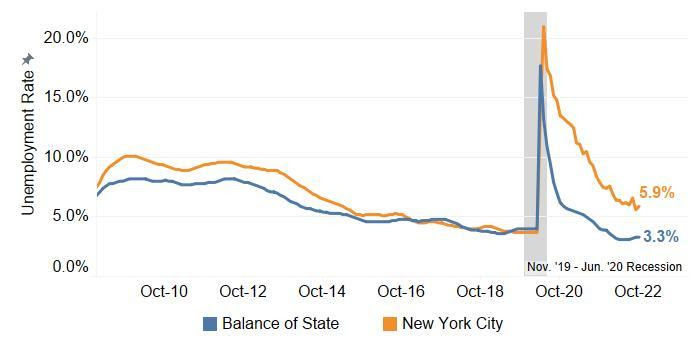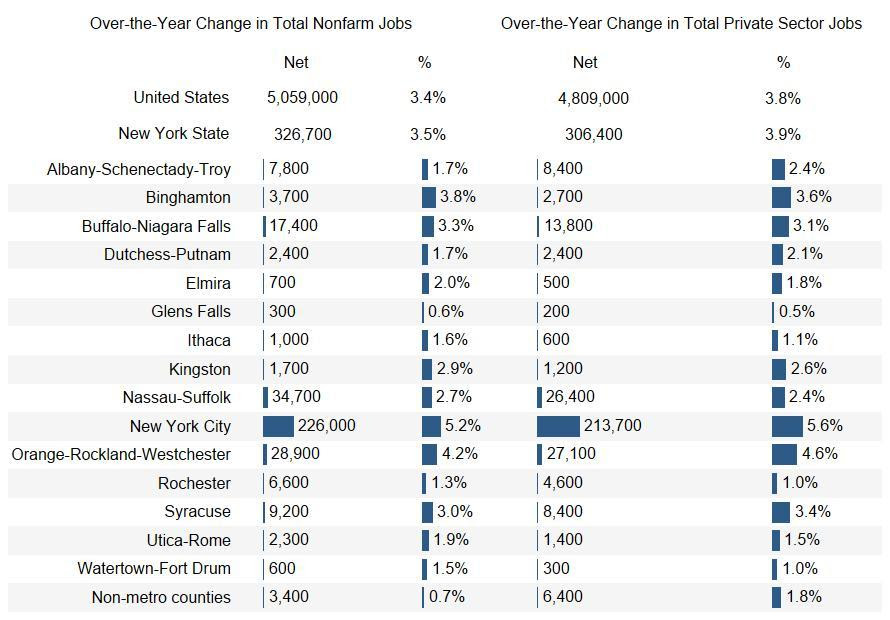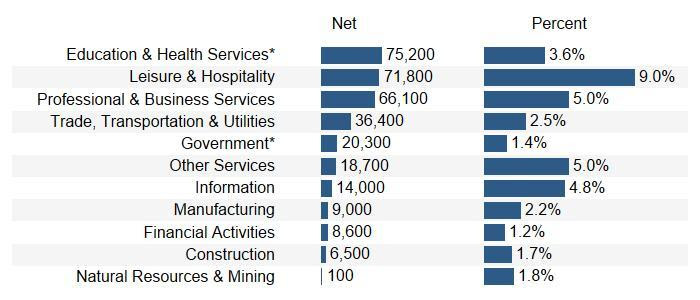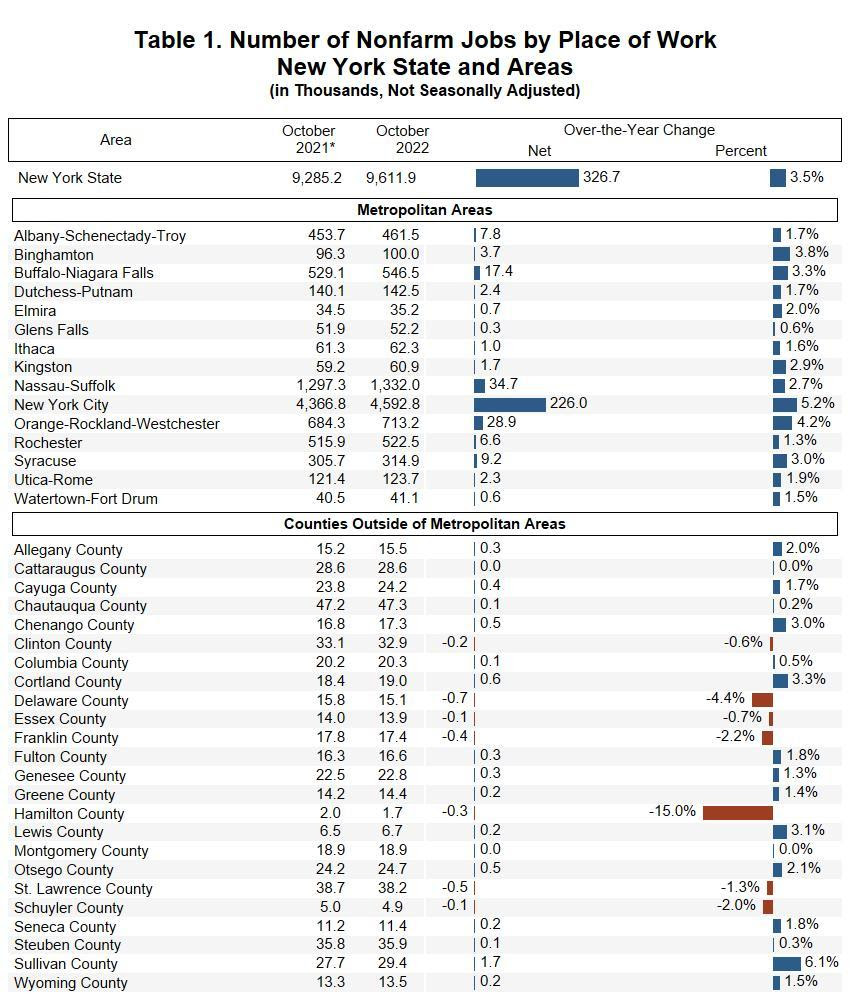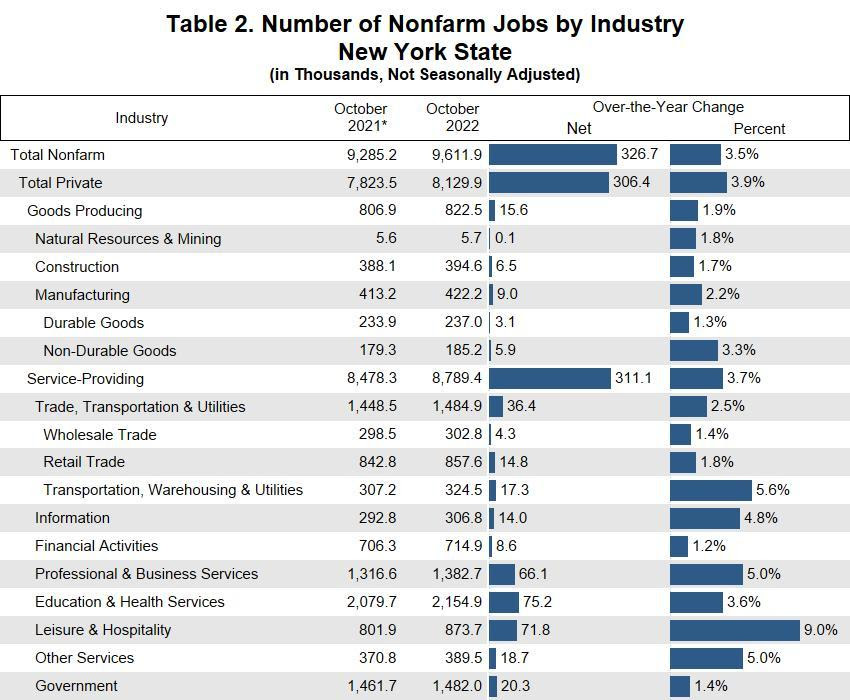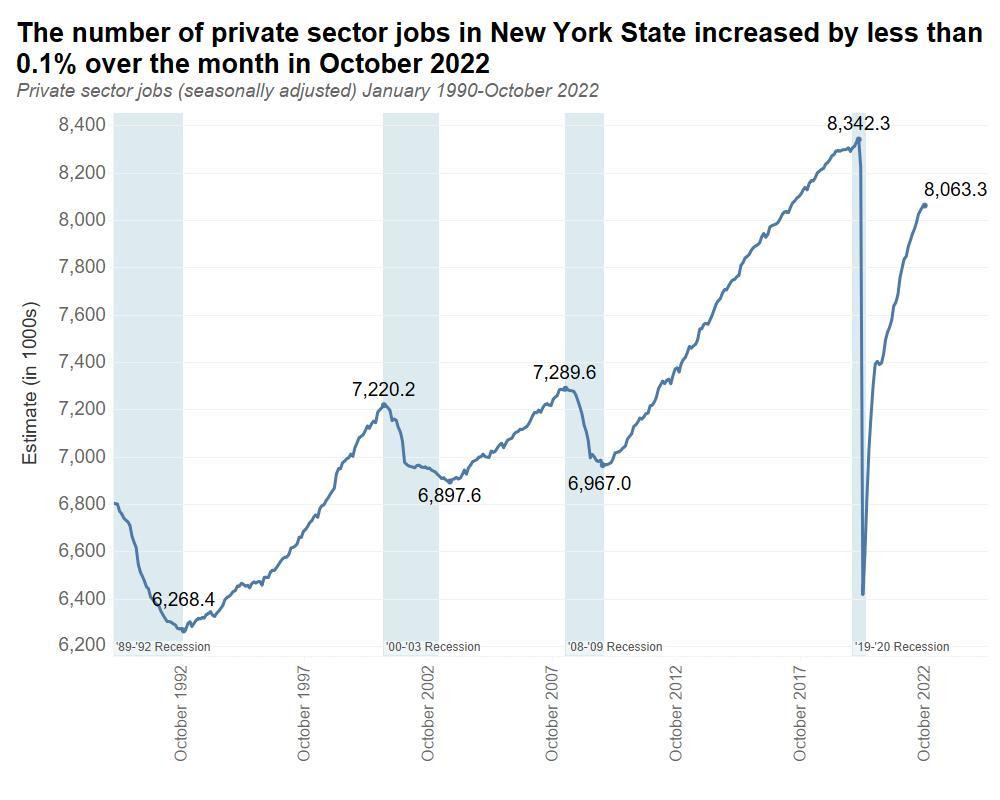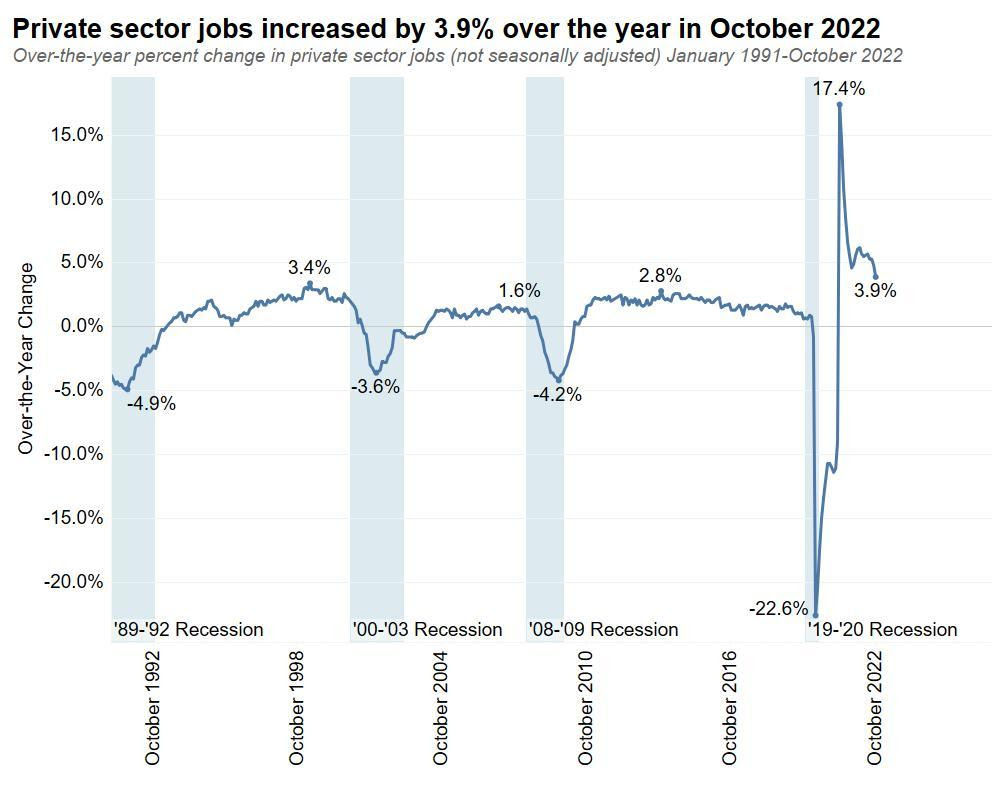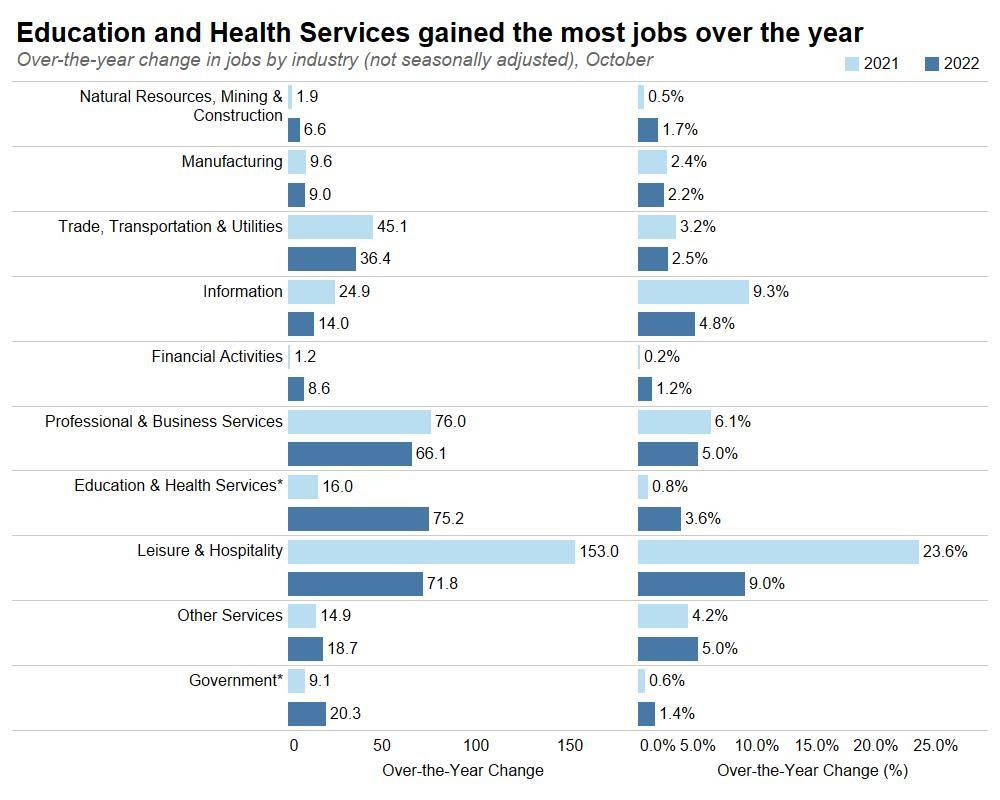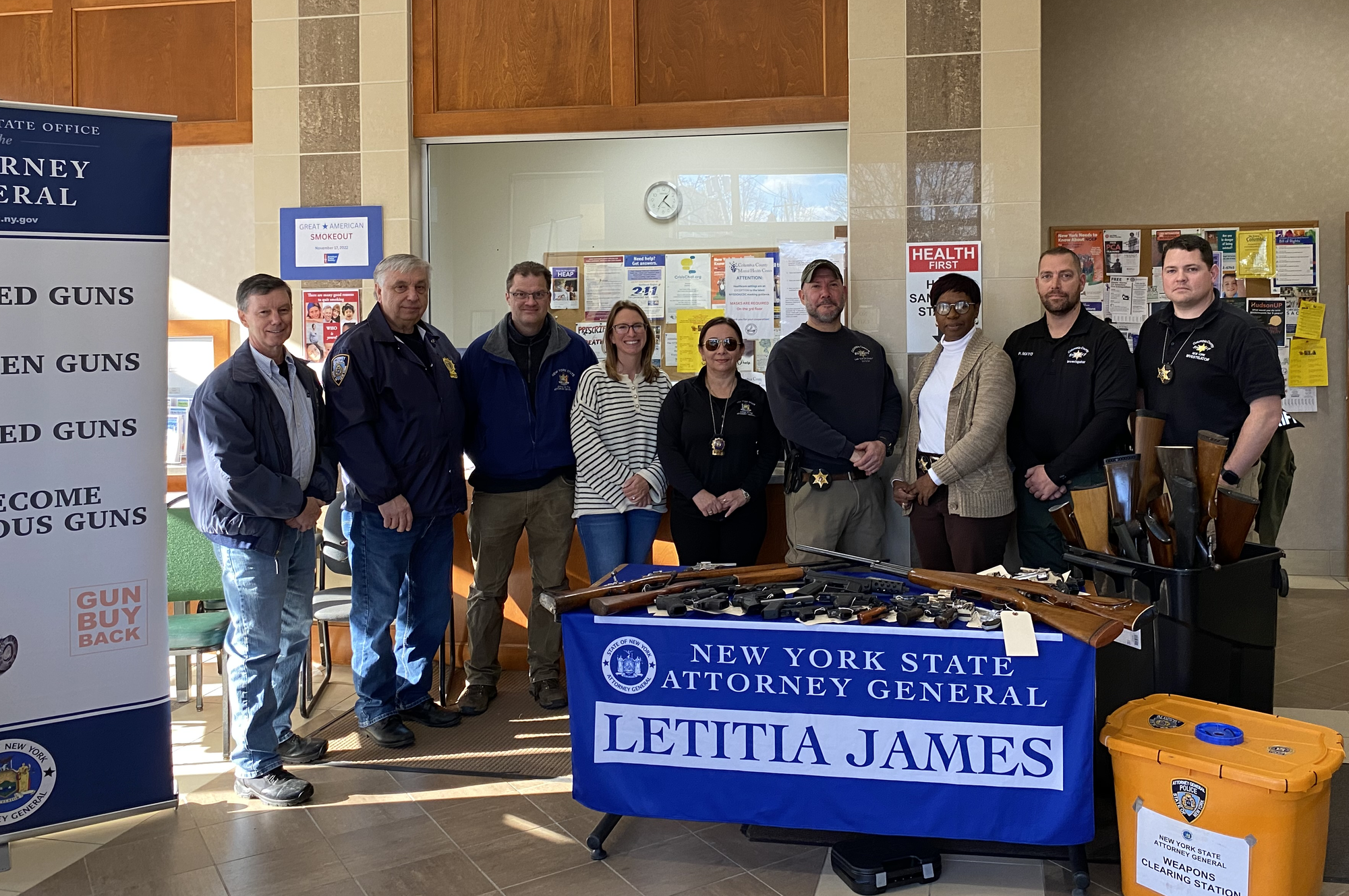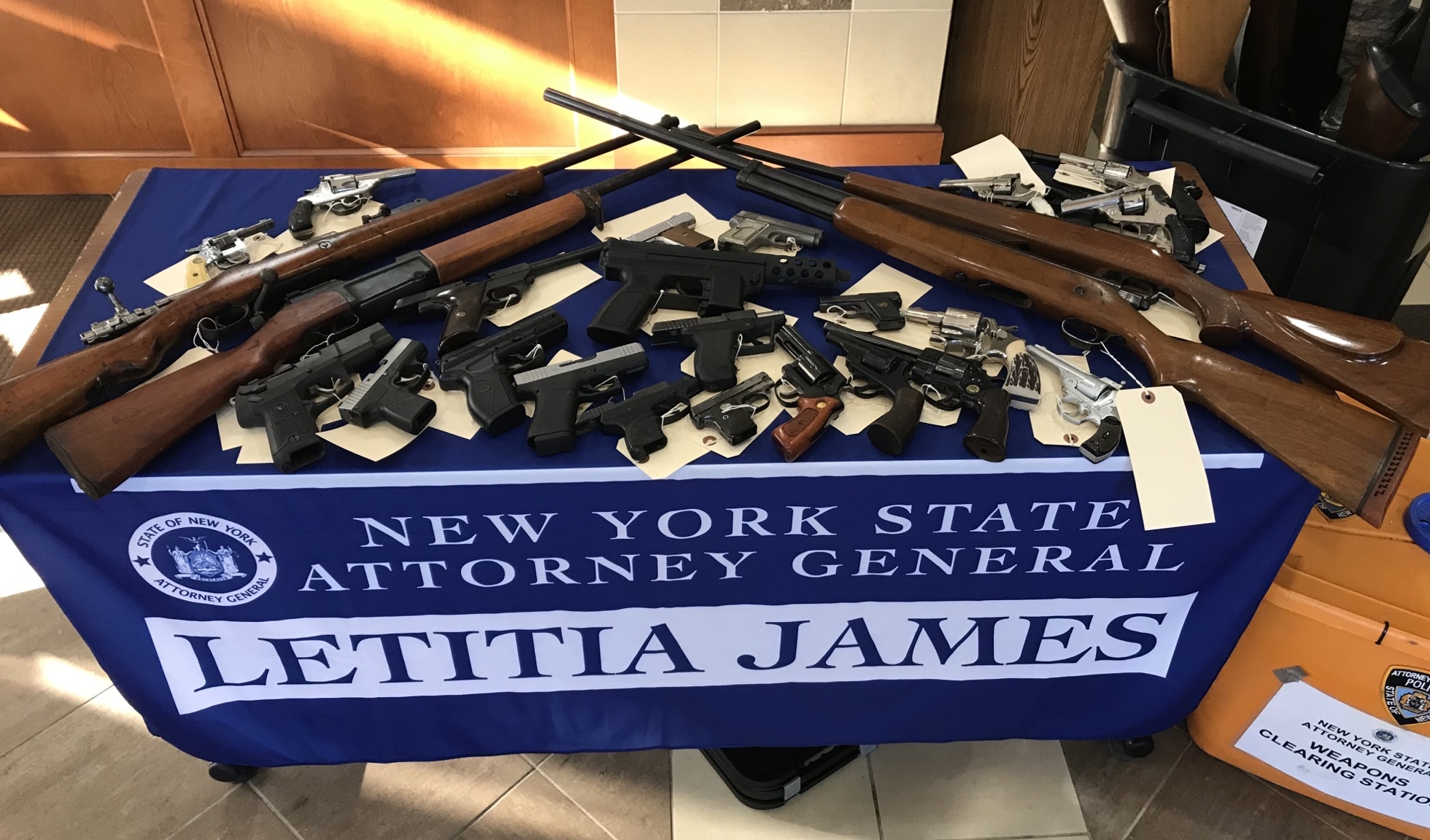Doubles National Guard Deployment To Aid Residents, Assist Thruway Crews with Snow Clearing, and Help Local Law Enforcement with Stranded Vehicles
11 Counties Remain Under State of Emergency as Winter Storm Continues To Cause Hazardous Travel and Potential for Power Outages in Erie, Jefferson, and Livingston Counties
New Yorkers Urged To Avoid Travel in Buffalo and Watertown Areas and Follow Local Travel Advisories Due to Dangerous Conditions
Total Accumulations of More than Five Feet of Snow Reported in Orchard Park, Blasdell, and Hamburg in Erie County, and More than Six Feet of Snow in Watertown and Fort Drum Area, With Peak Snowfall Rates of Six Inches Per Hour in Hamburg and in Watertown
Travel Ban in Effect for Most of Erie County, Including Entire City of Buffalo; Multiple State Highway Closures in Place, Including Parts of Route 219 and Route 400
Governor Kathy Hochul today updated New Yorkers on the winter storm impacting parts of Western, Central, and Northern New York. More than five feet of snow has already accumulated in parts of Erie County and more than six feet of snow has fallen in Jefferson County since Thursday evening. Areas in and around the cities of Buffalo and Watertown have experienced consistent snowfall rates of two-to-three inches per hour, with some locations seeing a peak of six inches of snowfall an hour. This intense snowfall has created extremely dangerous travel conditions, and as a result, numerous road closures and travel bans remain in place throughout Erie County. With these conditions expected to continue throughout the weekend, Governor Hochul and local officials are continuing to urge New Yorkers to avoid travel in the impacted areas of Erie County, as well as in areas in the North County experiencing a similar lake effect storm off the eastern shores of Lake Ontario near Watertown. The Governor is also submitting a request to President Biden for a federal Emergency Declaration for 11 counties. Once approved, the Emergency Declaration will provide immediate federal funding to impacted counties to support ongoing response and rescue operations.
"I have spent the past several days here in Western New York working around the clock with my team to coordinate storm preparations with local officials, survey conditions on the ground and deploy resources to keep residents safe, including doubling the number of National Guard members to Western New York," Governor Hochul said. "This is an historic storm, and I want to thank everyone in storm impacted areas for their patience and compliance with local travel ordinances. While we continue our recovery efforts, including requesting a federal emergency declaration, I encourage everyone to continue to look after one another, stay home, and check in on loved ones and neighbors so that we all come out of this safely."
Federal Emergency Declaration
The Governor is submitting a request to President Biden for a federal Emergency Declaration for Cattaraugus, Chautauqua, Erie, Genesee, Jefferson, Lewis, Niagara, Oneida, Oswego, St. Lawrence, and Wyoming Counties. Once approved, the Emergency Declaration will provide immediate federal funding to impacted counties to support ongoing response and rescue operations. Governor Hochul will also ask the federal Small Business Administration to evaluate how it can help small businesses impacted by the storm in the 11 counties and contiguous counties.
Prior to the arrival of lake effect snow on Thursday, Governor Hochul declared a State of Emergency for 11 counties and contiguous counties, which remains in place. Additionally, New York's emergency management experts have been in constant communication with their local counterparts for days leading up to the event.
The New York State Department of Transportation, Thruway Authority, and numerous other agencies also pre-deployed additional resources to Western New York and the North Country. Those resources include:
NYS Equipment in Western New York and North Country
- 484 large and medium plow trucks
- 14 tow plows
- 98 large loaders
- 24 snow blowers
- 39 tracked vehicles (of which 24 are snowmobiles)
- 533 generators in the regions
- 202 chainsaws in the regions
NYS Personnel in Western New York and North Country
- 1,056 DOT and Thruway operators and supervisors
- 142 State Police members
- 150 National Guard members
- 24 ICS (Incident Command System) personnel
The intense band of lake effect snow from Lake Erie will continue impact Western New York throughout the weekend and is forecast to slowly shift north of the city of Buffalo on Saturday and then move south again across the Buffalo metro area bringing another six to nine inches of snow. Similarly, the band off the eastern shores of Lake Ontario will intensify and could bring another six inches of snow throughout the northern portion of Jefferson County, including the city of Watertown, through Sunday evening. Oswego County may see an additional two feet of snow between Sunday and Monday.
Lake Effect Snow Warning and various weather advisories also remain in effect through Sunday and Monday for multiple regions. For a complete listing of weather watches and warnings in your area, visit your area's National Weather Service website.
New York State Division of Homeland Security and Emergency Services Commissioner Jackie Bray said, "New Yorkers in Western New York and the North Country were well prepared for this storm, and I want to thank them for staying off the roads and following the travel guidelines from local officials for everyone's safety. I remind everyone we are still expecting more snow from this storm and 11 counties remain in a State of Emergency. Governor Hochul and I will continue working with our partners in all levels of government to ensure New Yorkers stay safe."
National Guard
Governor Hochul also has deployed the National Guard to assist with the State's response and has doubled the total deployment to approximately 150 guard members from the 2nd Squadron 101st Cavalry and the 107th Attack Wing from Niagara Falls, the 105th Military Police Company in Buffalo, and the 174th Attack Wing in Syracuse. Efforts are focused in the Town of Hamburg, where members are assisting with snow clearance and medical missions, including transporting individuals in need of dialysis and other appointments. Members also are assisting with snow clearing efforts on I-90 and helping local law enforcement responding to stranded vehicles.
Agency Activities
Division of Homeland Security and Emergency Services
The New York State Division of Homeland Security and Emergency Services is closely monitoring weather and travel conditions, coordinating State agency response operations, and communicating with local governments throughout the event. The State Office of Emergency Management (OEM) began interagency coordination calls with the National Weather Service on Wednesday in preparation for the storm.
The State's Emergency Operations Center in Albany was activated on Thursday, as well as a Regional Operations Center in Cheektowaga, Erie County, where DHSES is coordinating field response with State Agency partners including NYSDOT, State Police and the Thruway Authority. Additionally, OEM staff are embedded at the Erie County Emergency Operations Center to further coordination between state and local response. The State's stockpiles are prepared to deploy assets to local governments to support any storm-related needs.
The State Office of Fire Prevention and Control supported local first responders with safely extracting a person from a residential structural collapse and is deploying a six-person collapse response team to Erie County as snow continues to fall overnight.
Department of Transportation
In Western New York, Route 219 from I-90 to Peters Road, and Route 400 between I-90 and State Route 16 are currently closed. Working in coordination with state and local officials, the Department is monitoring conditions and will update the public when these roads are reopened.
The State Department of Transportation is responding with 3,287 supervisors and operators. Staff can be configured into any type of response crew that is required, including snow and ice operations, drainage, chipper, load and haul, and cut and toss. Additionally, 75 Incident Command System (ICS) personnel are available to support the event.
The Department sent additional plows and operators from the Western Southern Tier to Erie County on Friday to further assist with snow and ice removal operations, including on local roads in the Town of Hamburg. In addition to existing resources, DOT will bring in contractor resources from Western NY, Finger Lakes and Central NY. This includes 64 loaders, more than 130 large dump trucks, one skid steer, and about 200 more personnel.
All residency locations will remain staffed for 24/7 operations throughout the duration of the event and priority cleanup operations. All available snow and ice equipment is ready to deploy. Fleet mechanics in affected areas will be staffing all main residency locations 24/7 to perform repairs and keep trucks on the road.
Commercial Vehicle Ban
DOT implemented a full commercial vehicle ban at the following locations in addition to the ban on the New York State Thruway (I-90):
- Interstate 190 - Route 62 to I-90
- Interstate 290 - full length
- Interstate 990 - full length
- Route 33 - expressway portion only
- Route 219 - Route 39 to I-90
- Route 400 - full length
- Buffalo Skyway Route 5 - full length
- I-81 - Exit 33 to Canadian border - trucks use right lane only
Buffalo Skyway Reopening
The Buffalo Skyway (Route 5) has been reopened, but drivers in Erie County should continue to follow local travel advisories and continue to avoid travel.
To find the latest traffic and travel conditions, call 511, visit www.511ny.org or download the free 511NY mobile app. The online system and mobile app include a state road map, indicating which roads are experiencing snow conditions and where conditions are normal.
Thruway Authority
Thruway Authority personnel are actively engaged in snow and ice operations responding to the lake effect storm with 657 operators and supervisors statewide. Thruway has shifted and deployed additional staff and equipment from its New York, Syracuse, and Albany Divisions to support snow and ice operations in Western New York. Deployed resources include operators and supervisors, mechanics, large plow trucks, and large snowblowers.
Additionally, Thruway Emergency Operations Centers are open and staffed in Buffalo and headquarters for the duration of the storm to assist with managing snow and ice operations, traffic incident response, emergency management, and real-time traveler information.
Thruway Updates
The Thruway has reopened to passenger vehicle through-traffic only between Exit 53 (Buffalo (Downtown) - Canada - Niagara Falls - I-190) and Exit 59 (Dunkirk). Some exits in the area will remain closed to all traffic to allow for snow removal on local roadways.
Commercial traffic continues to be banned on the New York State Thruway (I-90) from Exit 46 (Rochester I-390) to the Pennsylvania border, and the Niagara Thruway (I-190) from I-90 to Exit 22 (Route 62) until further notice. All commercial traffic heading eastbound on the Thruway must exit at Exit 61 (Ripley-Shortman Road). Commercial traffic heading westbound on the Thruway towards Pennsylvania from points east, should use Exit 46 (Rochester - I-390) for I-390 to I-86 West.
Variable Message Signs and social media are utilized to alert motorists of winter weather conditions on the Thruway. The Thruway Authority also encourages motorists to download its mobile app which is available for free on iPhone and Android devices. The app provides motorists direct access to real-time traffic information, live traffic cameras, and navigation assistance while on the go. Motorists can also sign up for TRANSalert e-mails which provide the latest traffic conditions along the Thruway. You can follow the Thruway Authority on Twitter: @ThruwayTraffic and @NYSThruway and on Facebook at NYS Thruway Authority.
Department of Environmental Conservation (DEC)
DEC police officers, forest rangers, emergency management staff, and regional staff are on alert and monitoring the developing situation and actively patrolling areas and infrastructure impacted by severe weather. DEC is coordinating resource deployment with agency partners and all available assets are positioned to assist with any emergency response.
DEC is advising backcountry users to be aware of and prepared for winter conditions. Winter hiking safety and preparedness are extremely important no matter your physical ability or destination. Properly preparing for winter conditions is essential for a more enjoyable and safer experience. Additional information is available at https://www.dec.ny.gov/outdoor/112826.html
DEC encourages hunters planning to take part in the opening weekend of New York's Southern Zone big game season to take extra precautions during this weekend's storm. Safety tips and additional information for hunters is available at https://www.dec.ny.gov/public/76659.html
DEC reminds those responsible for the large-scale removal and disposal of snow to follow best management practices to help prevent flooding and reduce the potential for pollutants like salt, sand, oils, trash, and other debris in snow from affecting water quality. Disposal of snow in local creeks and streams can create ice dams which may cause flooding in nearby areas. Public and private snow removal operators should be aware of these safety issues during and after the storm. Additional information is available at https://www.dec.ny.gov/docs/water_pdf/togs5111new.pdf
Due to expected inclement weather conditions, DEC facilities may be closed or have restricted access during and after the storm. To check the status of impacted facilities, visit the DEC Storm Information webpage at https://www.dec.ny.gov/public/76659.html
Office of Parks, Recreation and Historic Preservation
New York State Park Police and park personnel are on alert and closely monitoring weather conditions and impacts. Access is currently restricted to Buffalo Harbor and Woodlawn Beach State Parks. Park visitors should check parks.ny.gov or call their local park office for the latest updates regarding park hours, openings, and closings.
Department of Public Service
New York's utilities have approximately 5,780 workers available statewide to engage in damage assessment, response, repair, and restoration efforts. This includes an additional 280 external FTEs secured by National Grid. NYSEG has an additional 224 contractor line workers and 99 contractor tree workers staged to respond as needed. DPS staff will track utilities' work throughout the event and ensure utilities shift appropriate staffing to regions that experience the greatest impact.
State Police, State Fire, and EMS
The State Police added extra patrols to the areas most impacted by the lake effect snow, and has staged additional specialty vehicles, including all-terrain vehicles, utility task vehicles and snowmobiles, in those regions. All four-wheel drive vehicles are deployed, and troop emergency power and communications equipment has been tested. As of November 19, State Fire removed 155 people from trapped vehicles and moved them to safety.
Winter Safety Tips
Winter Travel
- Some of the most important tips for safe driving include:
- When winter storms strike, do not drive unless necessary.
- Use caution on bridges as ice can form quicker than on roads.
- If you must travel, make sure your car is stocked with survival gear like blankets, a shovel, flashlight and extra batteries, extra warm clothing, set of tire chains, battery booster cables, quick energy foods, and brightly colored cloth to use as a distress flag.
- If you have a cell phone or other communications device, such as a two-way radio, available for your use, keep the battery charged and keep it with you whenever traveling. If you should become stranded, you will be able to call for help, advising rescuers of your location.
- The leading cause of death and injuries during winter storms is transportation accidents. Before getting behind the wheel, make sure that your vehicle is clear of ice and snow; good vision is key to good driving. Plan your stops and keep more distance between cars. Be extra alert and remember that snowdrifts can hide smaller children. Always match your speed to the road and weather conditions.
- It is important for motorists on all roads to note that snowplows travel at speeds up to 35 mph, which in many cases is lower than the posted speed limit, to ensure that salt being dispersed stays in the driving lanes and does not scatter off the roadways. Oftentimes on interstate highways, snowplows will operate side by side, as this is the most efficient and safe way to clear several lanes at one time.
- Motorists and pedestrians should also keep in mind that snowplow drivers have limited lines of sight, and the size and weight of snowplows can make it very difficult to maneuver and stop quickly. Snow blowing from behind the plow can severely reduce visibility or cause whiteout conditions. Motorists should not attempt to pass snowplows or follow too closely. The safest place for motorists to drive is well behind the snowplows where the roadway is clear and salted. Never attempt to pass a snowplow while its operating.
Heavy Exertion
Heavy exertion, such as shoveling snow, clearing debris or pushing a car, increase the risk of a heart attack.
To avoid problems:
- Stay warm, dress warm, and SLOW DOWN when working outdoors.
- Take frequent rests to avoid over-exertion
- If you feel chest pain, shortness of breath, or pain in your jaw radiating down your arm, STOP and seek help immediately.
Power Outages
- Call your utility to determine area repair schedules
- Turn off or unplug lights and appliances to prevent a circuit overload when service is restored; leave one light on to indicate when power has been restored
- If heat goes out during a winter storm, keep warm by closing off rooms you do not need
Heating Safety
- Use only safe sources of alternative heat such as a fireplace, small well-vented wood or coal stove or portable space heaters
- Always follow manufacturer's instructions
- When using alternative heat sources such as a fireplace, woodstove, etc. always make sure you have proper ventilation
- Keep curtains, towels, and potholders away from hot surfaces
- Have a fire extinguisher and smoke detectors and make sure they work
- If you use kerosene heaters to supplement your regular heating fuel, or as an emergency source of heat, follow these safety tips:
-Follow the manufacturers' instructions
-Use only the correct fuel for your unit
-Refuel outdoors ONLY and only when the unit is cool
-Keep the heater at least three feet away from furniture and other flammable objects
-When using the heater, use fire safeguards and ventilate properly
For more safety tips, visit https://dhses.ny.gov/safety.

